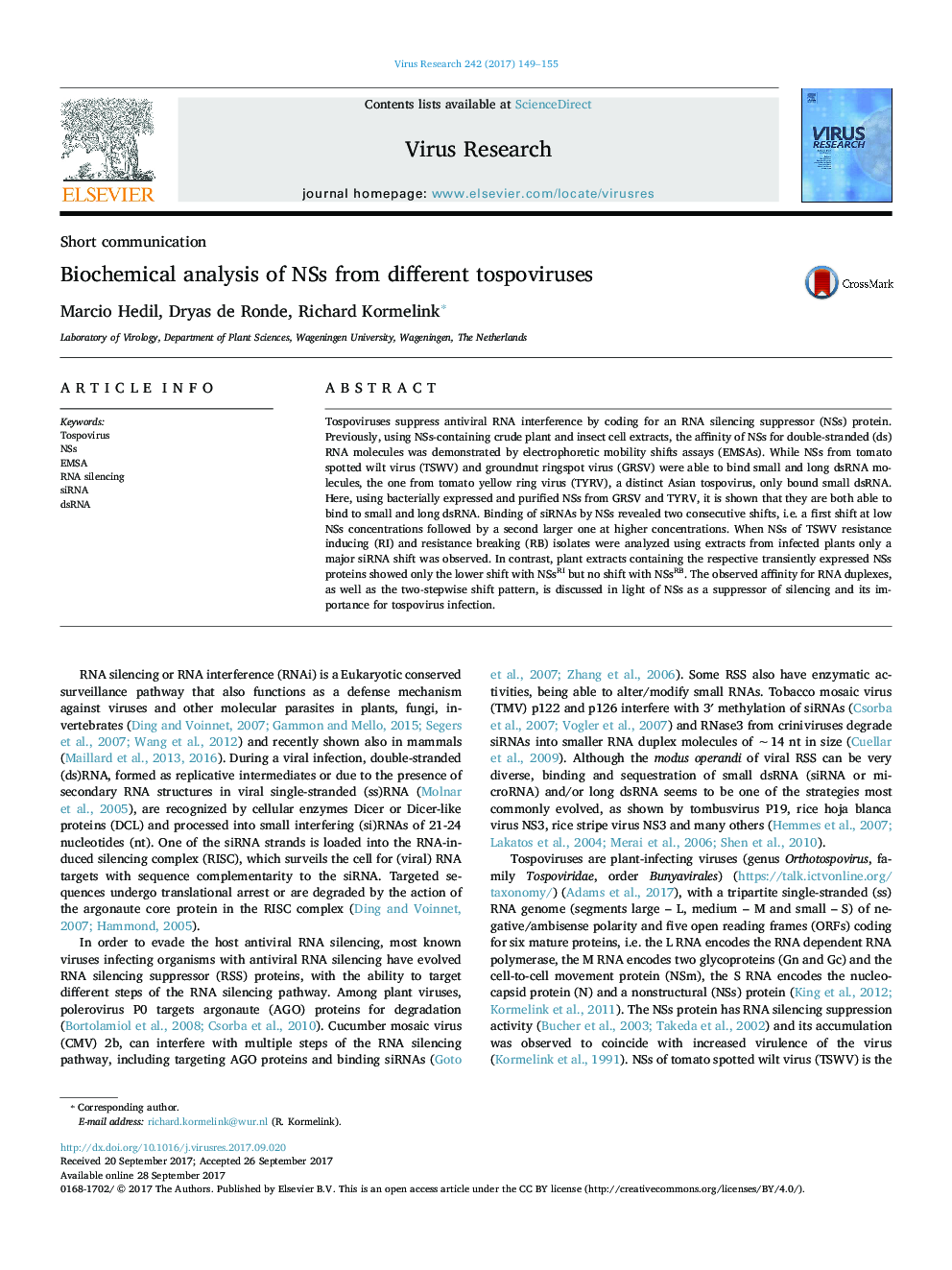| Article ID | Journal | Published Year | Pages | File Type |
|---|---|---|---|---|
| 5675277 | Virus Research | 2017 | 7 Pages |
â¢Binding of small and long dsRNA is likely generic to all Tospovirus NSs proteins.â¢dsRNA binding involves a NSs concentration-dependent two-step pattern.â¢NSs from Tsw breaking TSWV isolates may still bind dsRNA and suppress systemic RNA silencing.â¢This study stresses the importance of using purified proteins for biochemical assays.
Tospoviruses suppress antiviral RNA interference by coding for an RNA silencing suppressor (NSs) protein. Previously, using NSs-containing crude plant and insect cell extracts, the affinity of NSs for double-stranded (ds)RNA molecules was demonstrated by electrophoretic mobility shifts assays (EMSAs). While NSs from tomato spotted wilt virus (TSWV) and groundnut ringspot virus (GRSV) were able to bind small and long dsRNA molecules, the one from tomato yellow ring virus (TYRV), a distinct Asian tospovirus, only bound small dsRNA. Here, using bacterially expressed and purified NSs from GRSV and TYRV, it is shown that they are both able to bind to small and long dsRNA. Binding of siRNAs by NSs revealed two consecutive shifts, i.e. a first shift at low NSs concentrations followed by a second larger one at higher concentrations. When NSs of TSWV resistance inducing (RI) and resistance breaking (RB) isolates were analyzed using extracts from infected plants only a major siRNA shift was observed. In contrast, plant extracts containing the respective transiently expressed NSs proteins showed only the lower shift with NSsRI but no shift with NSsRB. The observed affinity for RNA duplexes, as well as the two-stepwise shift pattern, is discussed in light of NSs as a suppressor of silencing and its importance for tospovirus infection.
